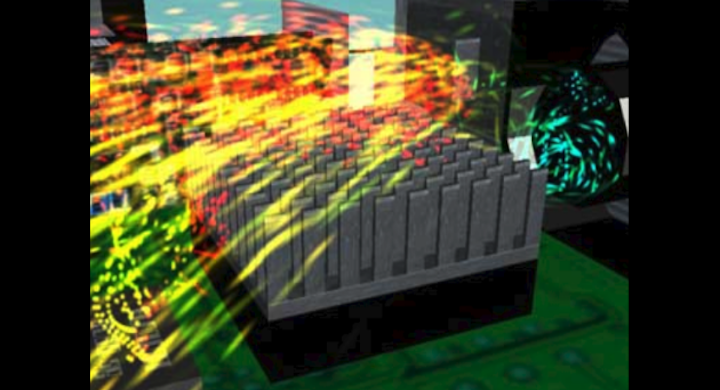The Importance of Thermal Design

Thermal considerations are fundamental when designing any electronic equipment. Convection, conduction, and radiation heat transfer all need attention to build efficient equipment and to keep it running optimally. Both the printed circuit board (PCB) and the integrated circuit (IC) package are important components to any piece of electronic equipment and need to be effectively integrated into the design.
New computational fluid dynamics (CFD) software helps designers include these and all other important aspects by providing tools for thermal simulation and computational fluid dynamics. With this software, designers can validate product behavior and optimize product design prior to spending time and money on manufacturing.
While mechanical engineers address the physical design with one software and the electronic designers address the ICs and PCBs with another, CFD software allows the two to collaborate. Importing the data from both the mechanical and electronic designers’ programs, accurate, thermal information is gathered to analyze and simulate all aspects of the product. With that information, design engineers now have the ability to test, experiment, and verify the different variables of a product at a quicker speed than before.
ECS Thermal Design Study
Using FloTHERM XT, one company, Electronic Cooling Solutions (ECS), studied the challenges of thermal design of a tablet that uses forced convection to cool the components with blowers that direct the airflow. By building a thermal model of a tablet, they were able to evaluate alternative thermal management techniques without the time or expense of physical prototypes. With a validated model, they compared the heat spread inside the tablet using infrared images. One area they simulated was to avoid recirculating the exhaust with angled louvers that directed the airflow from the tablet’s plane.
Another use of their thermal model was to simulate different conductivity of the tablet’s outer surface temperature and determine the effects on its components. With two batteries isolated at the bottom of the tablet near the GPU and CPU, a low temperature needs to be maintained. The batteries don’t generate significant heat, but keeping the tablet isothermal is what makes thermal design difficult and these simulations helpful.
Working on the acoustic levels required ECS to team up with Orfield Labs which maintains zero background noise. They measured the sound power for different blower voltages. The results of their simulations showed that increasing heat spreading improves battery life and the acoustics by reducing the required blower speed.
Thermal design for Cooling Systems
The cooling system of any device is a very important element – it not only protects your equipment, but it helps to expand the life of it. Both the performance power and the space available around a device’s internal components play big roles in the cooling of it. Small devices require small parts; and with smaller devices performing at higher levels, thermal management is even more crucial.
In a high performing tablet, the GPU and CPU generate the most heat and require a sufficient cooling system. There are active cooling methods, like forced convection, or fans, and there are passive methods like thermal radiation, conduction, and convection. Most systems use a combination of these methods. Thermal design is necessary in determining the best method for the build to prevent catastrophic failure.
Directing their attention to the implications of the system’s temperature, mechanical and thermal engineers use CFD software to find methods for reducing heat build-up by incorporating fans and filters. FloTHERM’s software actually includes the UAF air filter media in their thermal libraries, allowing designers to easily import the data for their CFD analysis. Now engineers can gain more comprehensive insights into the air filters’ effects on the entire system. UAF supports the system design even further with 3D CAD air filter models and free prototypes for testing.
Selecting the best products for each application is vital to thermal management. Defining information about the equipment’s environment, location, enclosure, and interior equipment help determine appropriate methods for eliminating its hot spots. Simple ventilation devices like air filters help maintain a cool, constant temperature while circulating fans and air conditioners help improve heat dissipation.
UAF helps equipment operate consistently and avoid overheating with their many server, router, switch, and storage device options. Meeting operating requirements, air filtration needs, and keeping its products within critical environments, UAF helps to keep your equipment within its optimal temperature range.
